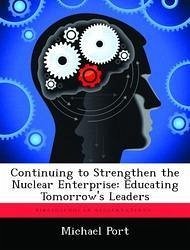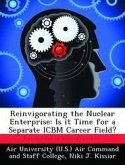CSAF's number one vector for 2010-2011 is, "to continue to strengthen the Air Force nuclear enterprise." Realizing many non-nuclear-enterprise-affiliated flag officers and SES civilians were either mid-to-senior captains or junior members of the Civil Service when the Cold War ended, this paper provides instructors with the tools necessary to educate and make conversant all general officer and senior civilians on the Air Force's nuclear enterprise. Using the CAPSTONE (officers) and APEX (civilians) courses as a foundation, respective syllabus architects should add a day to each course to introduce key Air Force and other Service (if so desired) nuclear enterprise topics. For both officers and civilians, this should occur on the USSTRATCOM visitation day. Due to ever-shrinking budgets, time management constraints for senior leaders, and a truly Air Force focus if Sister Services elect not to participate/add curricula, an on-line course could be constructed with personnel completing it upon CAPSTONE/APEX "graduation." Instructors and leaders throughout the Air Force could also use such an on-line course to augment existing professional military education and leadership development courses as well. The proposed unclassified version of the course will begin with discussions on Air Force MAJCOM contributions to the nuclear enterprise. Topics will include AFGSC wings, weapon systems, and the roles performed by AMC, AFMC, ACC, AFSPC, and AETC. Remembering that Airmen are the Air Force's most important resource, course attendees will also gain insight into special requirements levied on personnel and nuclear weapons equipment through the PRP and the NWRM programs, respectively. Furthermore, prospective students must also understand how AFGSC provides forces to USSTRATCOM, how nuclear weapons are targeted and executed, and why a triad of weapon systems and capabilities instead of a dyad or monad is vital to the national defense.








